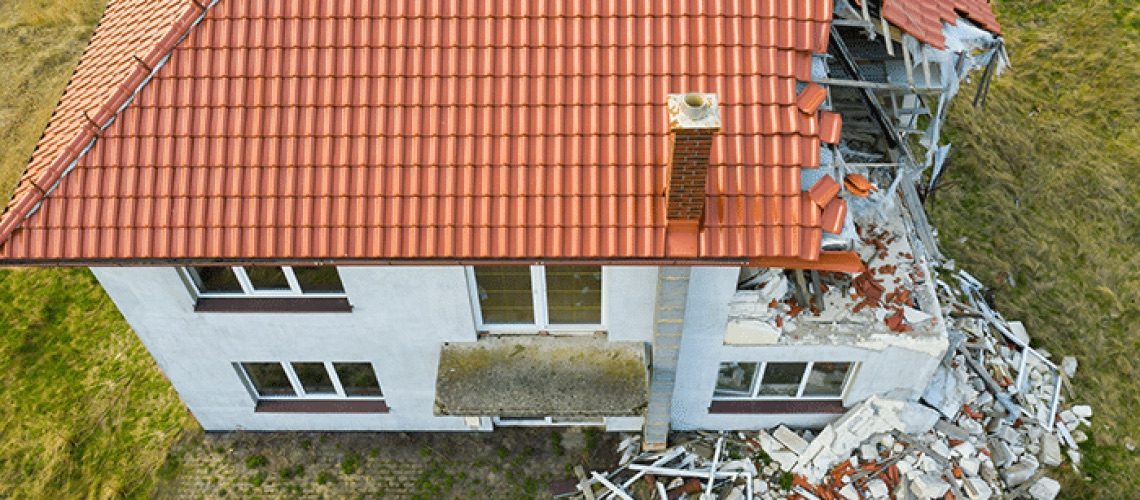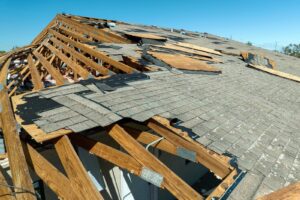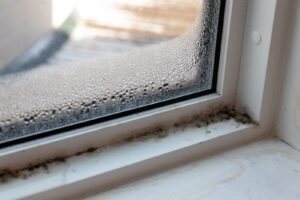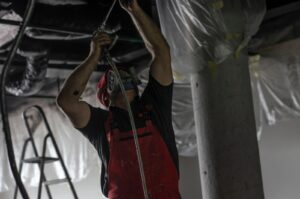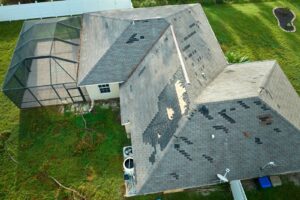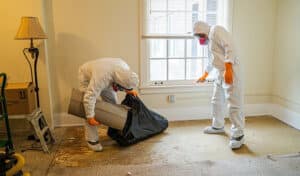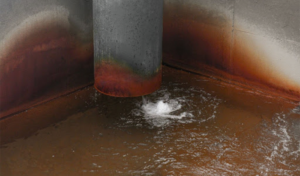You’ll want to inspect your roof for damage after a storm, but you might not know what a storm-damaged roof looks like. You might not even know what to expect when you see your roof. You know there are shingles up there, but how is everything supposed to look?
There’s a good chance you’ve never had a reason to look at your roof, at least until now. Being a homeowner comes with its challenges. You want to be responsible, but you’re unsure what that entails.
In today’s blog, we’re going over what to look for in a storm-damaged roof. There are different types of damage: wind, hail, and debris.
But first, we’ll explain what signs there are that you can notice from the ground. If you’re hesitant to climb a ladder, you can observe damage from the ground and call a professional for repairs. So, without further ado, let’s dive in!
Damage You Can Notice from the Ground
Although you’ll need to inspect your roof to confirm or deny storm damage, there is some damage that you can notice from the ground.
Do you see shingle granules in your yard? A large amount of shingles is an indicator that your roof is damaged. The shingle granules come from the asphalt protecting your roof from UV rays. So, not only is your roof damaged, but it’s also susceptible to sun damage.
Are your gutters leaking and clogged? This is a sign of roof damage. It can also lead to mold and water damage problems since the water is trapped and has nowhere to go.
If you’re noticing these signs of storm damage, you’ll likely need to get your roof repaired. And the sooner you repair your roof, the better. The longer you wait, the more damage your roof can suffer.
Wind Damage to Your Roof
The first type of damage we’ll look at is wind damage. Wind damage occurs whenever there are high winds. Wind damage might be part of a thunderstorm and often is, but there are some days when wind gusts are strong enough to cause damage on their own.
Missing shingles will be your first indicator that your roof has suffered wind damage. Wind gusts are capable of tearing the shingles right off your roof. They can also cause curling, where the wind gets the corners but isn’t strong enough to rip off the whole shingle. The edges and corners of the shingle will lift, which can cause other problems.
There are other signs of damage, but they’re not as noticeable. Your roof has a soffit, fascia, and an adhesive seal that work together to make the surface shed water instead of absorbing it.
Soffit is the roofing material that goes underneath the eave. It goes from the outside edge of your roof to the exterior wall of your house.
Fascia is the edging that connects the roof to the rafters, trusses, and gutter attachments.
Wind damage can break or destroy the soffit, fascia, adhesive seal, or all three.
If strong wind gusts were in your neighborhood, you should check your roof for missing shingles and thin, horizontal lines. These lines show up when the granules beneath shingles start to wear off. The shingle seal breaks and rubs against the shingle above it, causing this damage.
Do you see these signs of damage? That means that your roof has been damaged and is compromised. You’ll want to get your roof repaired before there’s any more damage.
Hail Damage to Your Roof
Hail damage is easier to spot than wind damage. Those indentations are hard to miss. But aesthetics aside, hail can cause severe damage to your roof and your home by cracking your shingles.
The damage might not be noticeable right away, but it will catch up to your home. Over time, you might notice water damage in your attic. This is because water can seep in through the cracked shingles.
If a recent hail storm affected your neighborhood, you should check your roof for hail damage. Besides the noticeable indentations, check for a pile of granules at the end of your downspout. Don’t worry if there are a few granules; that’s normal. It’s a giant pile that should be a warning sign.
Debris Damage to Your Roof
Of course, wind and hail are the only things that can damage your roof. Debris can, too. How much damage debris causes depends on what kind of debris it is.
The most common type of debris damage comes from trees and tree branches. Heavy winds can often knock down branches or limbs. If they’re high enough off the ground, they could land on your roof.
Of course, trees aren’t the only source of debris damage. Other objects can land on your roof and damage it. Just about anything that lands on your roof could damage it.
Are you concerned about a storm-damaged roof from falling debris? Check for debris on your roof, tons of granules in your downspout, and missing or cracked shingles. These are all signs of debris damage.
Contact Restoremasters for Your Roofing Repairs
Are you noticing signs of a storm-damaged roof? Whether your shingles are cracked, peeling, or altogether blown off, it’s essential to get your roof repaired as quickly as possible. The longer you have a storm-damaged roof, the more damage you’ll suffer in the long run.
Water damage, mold problems, and property damage are others concerns that can cause different problems down the road.
Thankfully, Restoremasters is here to help. For over 25 years, we’ve served much of Northern Utah, repairing rooves and returning lives to normal. Our team has over 100 years of combined experience, making us experts in roof repairs, wind damage, mold removal, and more.
If your roof damage extends beyond wind damage, we can take care of that, too. Restoremasters is your one-stop-shop for a fully-repaired home you can feel safe inhabiting.
Have questions? Need help? Please don’t hesitate to contact us today!

